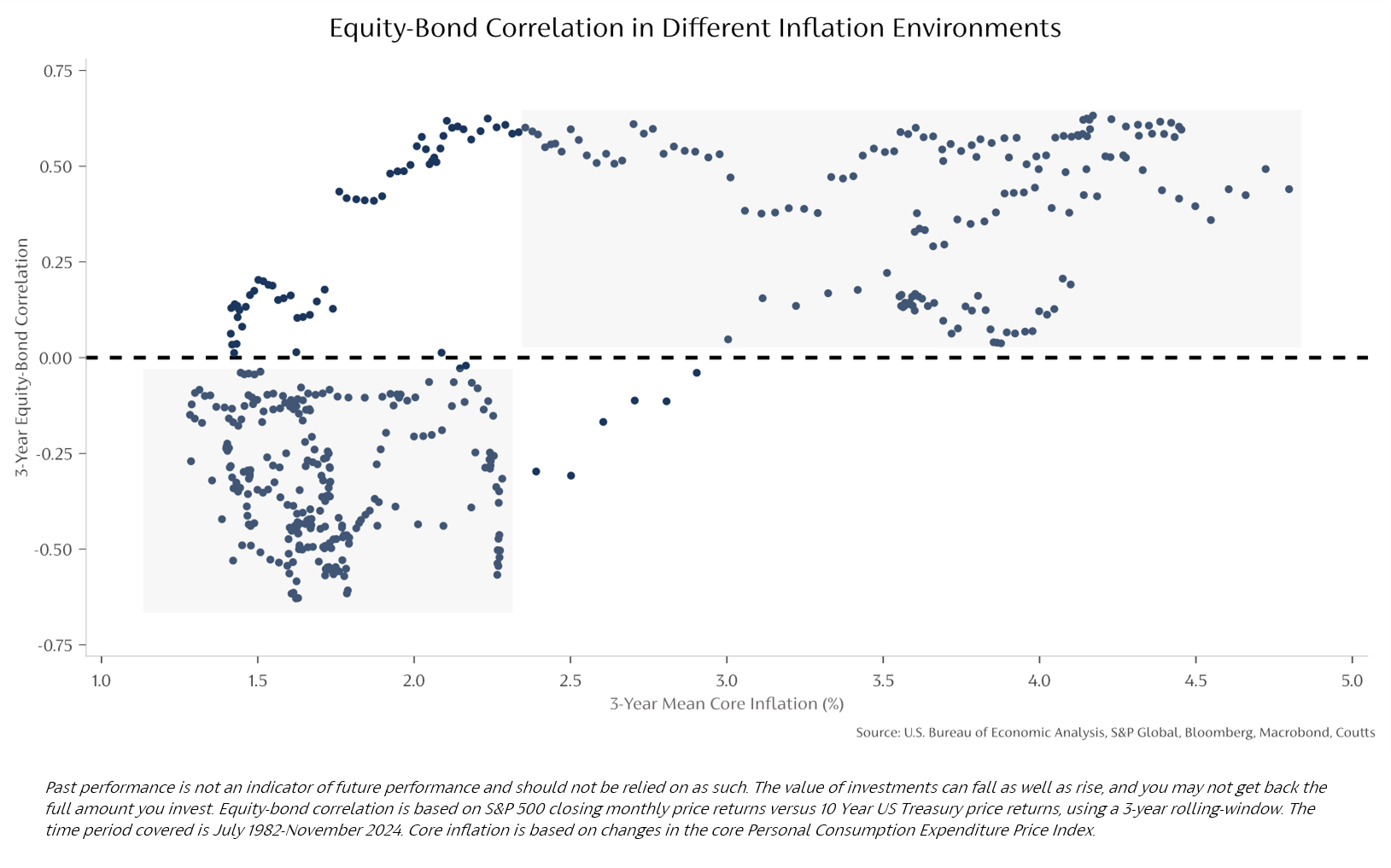Investing & Performance | 20 January 2025
CIO Update – the need for portfolio diversifiers
Bonds alone might not be enough to diversify a portfolio. Here’s why…

The two major asset classes that make up a multi-asset portfolio are equities and bonds. Typically, stocks and bonds are negatively correlated in terms of performance – when one appreciates in value, the other depreciates.
The benefit of holding both is that if either asset class falls, the other typically rises, helping to mitigate any potential losses.
However, this is most pertinent in a shallow inflationary environment. The chart below shows the average correlation between US equities and US government bonds at different levels of inflation.

The two major asset classes that make up a multi-asset portfolio are equities and bonds. Typically, stocks and bonds are negatively correlated in terms of performance – when one appreciates in value, the other depreciates.
The benefit of holding both is that if either asset class falls, the other typically rises, helping to mitigate any potential losses.
However, this is most pertinent in a shallow inflationary environment. The chart below shows the average correlation between US equities and US government bonds at different levels of inflation.

What’s most interesting about this chart is what happens when inflation reaches 3%. Below this value, equities and bonds express negative correlation – as you would expect.
But once inflation surpasses the 3% threshold (x-axis), their correlation turns positive (y-axis). Both asset classes move in tandem, so when one goes up, so does the other. And more concerningly, when one goes down, so does the other.
It’s worth noting that in a higher inflation environment, equities and bonds can both suffer. For equities, rising overhead costs can impede company profitability, though many firms mitigate this via raising prices or finding efficiencies.
For bonds, inflation has a more direct effect. When inflation rises, expectations of interest rate hikes also rise. This results in yields climbing and prices falling. A brief explanation of why prices fall when yields rise is that investors would prefer to buy newer bonds that come with a higher yield rather than an existing bond with a lower yield. Moreover, higher inflation reduces the future value of coupons – the regular interest paid to an investor of a bond– in real terms.
This creates the need for other diversifiers that behave differently from both equities and bonds.
Liquid alternatives
Within our multi-asset funds and portfolios, we include an allocation to a ‘liquid alternatives’ for that very purpose. Its strategy is to generate stable returns regardless of whether the market rises or falls. Liquid alternatives adopt techniques and financial instruments, such as short selling, which hedge against market downturns.
While inflation has been trending down from its highs of 2022, it has proven stickier than expected in recent months. There are also concerns it could accelerate in the early stages of 2025, largely due to the potential tariffs proposed by President-elect Donald Trump in the US, which could push up prices across the globe.
Diversifiers may therefore play a vital role this year. And if any volatility emerges, our liquid alternatives allocation could help stabilise returns within our funds and portfolios.
This is part of our new series ‘CIO Update’, showcasing our in-house analysis and research.
Past performance should not be taken as a guide to future performance. The value of investments, and the income from them, can fall as well as rise and you may not get back what you put in. You should continue to hold cash for your short-term needs.
More insights






